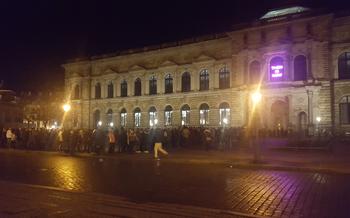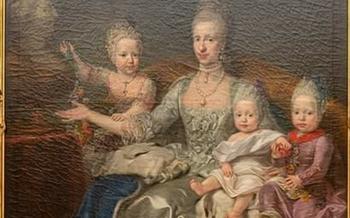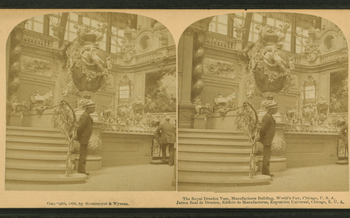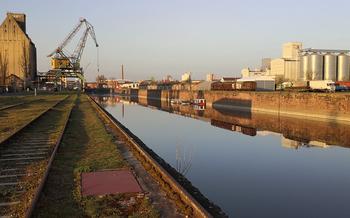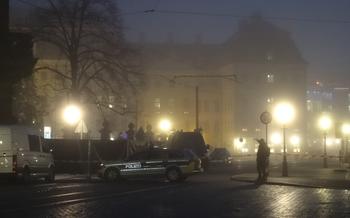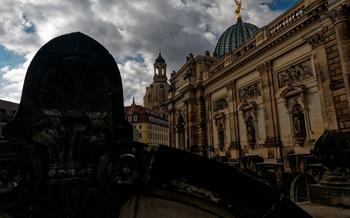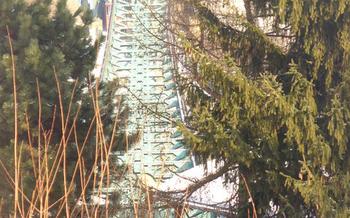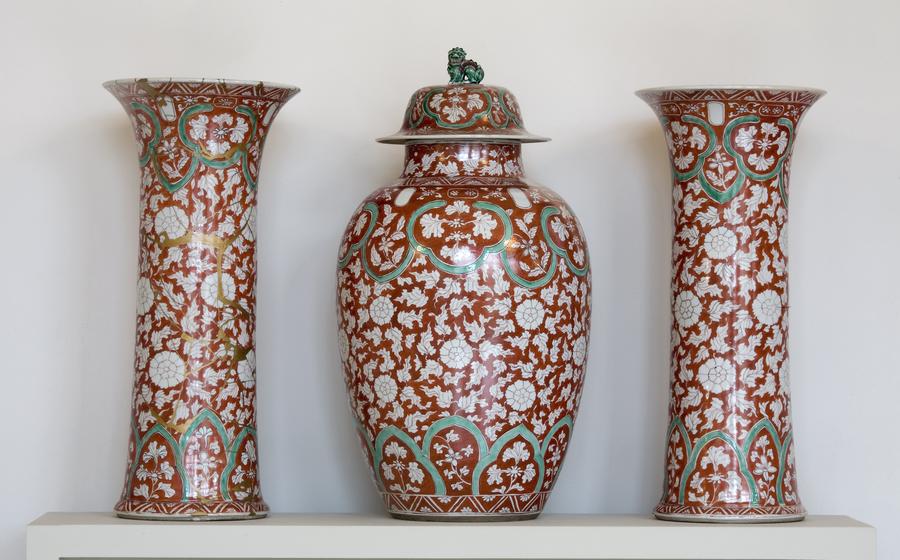
The Dresden Porcelain Collection
- A Porcelain Paradise
- Masterpieces Under One Roof
- A Journey Through Time
- The Alchemists of Porcelain:
- The Art of Meissen Porcelain:
- A Legacy of Excellence
- Exploring the Collection
- Must-See Exhibits
- Interactive Experiences
- Souvenirs and Treasures
- Beyond the Porcelain Collection
- Culinary Delights
- Transportation and Accessibility
- Hours of Operation and Admission:
- Insider Tip:
A Porcelain Paradise
The Dresden Porcelain Collection stands as a testament to the rich history of porcelain artistry in Germany. Its roots can be traced back to the 18th century when Augustus the Strong, Elector of Saxony, developed a deep fascination for the exquisite porcelain produced in China and Japan. Inspired by the beauty and refinement of these Eastern imports, Augustus sought to establish a porcelain manufacturing center in his own country. This ambition led to the founding of the Meissen Porcelain Manufactory in 1710, marking the beginning of a remarkable journey that would transform Dresden into a global hub for porcelain production.
Under the patronage of Augustus and his successors, the Meissen factory flourished, becoming renowned for its exceptional craftsmanship and artistic excellence. Skilled artisans and chemists worked tirelessly to unlock the secrets of porcelain production, perfecting the formula for creating the coveted white gold. The Meissen factory's reputation grew rapidly, and its porcelain became highly sought after by royalty and nobility throughout Europe, propelling Dresden to the forefront of the porcelain world.
Over the centuries, the Dresden Porcelain Collection has grown and evolved, accumulating a diverse array of exquisite pieces that showcase the artistry and technical prowess of Meissen porcelain makers. Today, the collection stands as a treasure trove of porcelain masterpieces, attracting visitors from around the world to marvel at its beauty and historical significance.
Masterpieces Under One Roof
The Dresden Porcelain Collection boasts a diverse range of holdings that showcase the artistry and craftsmanship of Meissen porcelain. Among the highlights are the magnificent Meissen porcelain masterpieces, renowned for their intricate designs, vibrant colors, and unparalleled quality. These exquisite works of art include figurines, tableware, vases, and decorative objects that embody the essence of Meissen's rich history and tradition.
The Japanese Palace, which houses a significant portion of the collection, is an architectural masterpiece in its own right. Built in the 18th century, the palace features elegant Rococo interiors and a serene Japanese garden, creating a harmonious backdrop for the display of Meissen porcelain. The Zwinger Palace, another architectural gem, also showcases a notable collection of Meissen porcelain, alongside other treasures from the Dresden State Art Collections.
A Journey Through Time
The Dresden Porcelain Collection's origins are deeply intertwined with the tumultuous historical events that shaped Europe in the 17th and 18th centuries. During the Thirty Years' War, Saxony suffered immense devastation, and its economy was in ruins. In an effort to rebuild and revitalize the region, Augustus the Strong, Elector of Saxony and King of Poland, turned his attention to the production of porcelain.
Augustus was fascinated by the exquisite porcelain he had seen on his travels to China and Japan. He believed that Saxony could become a major center for porcelain production, rivaling the renowned kilns of the East. In 1708, he established the Meissen Porcelain Manufactory, the first porcelain factory in Europe.
The early years of the Meissen factory were marked by experimentation and innovation. Augustus recruited skilled artisans from across Europe, including the alchemist Johann Friedrich Böttger, who is credited with discovering the secret formula for producing hard-paste porcelain in Europe. Böttger's breakthrough enabled Meissen to create porcelain of exceptional quality, with a pure white body and a lustrous glaze.
The Alchemists of Porcelain:
The creation of porcelain, a delicate and translucent material, was once shrouded in secrecy and considered an alchemical pursuit. The quest to unlock the secrets of porcelain production captivated the minds of many, including Augustus the Strong, who sought to establish a porcelain manufactory in his realm.
The key figure in this endeavor was Johann Friedrich Böttger, a talented alchemist and chemist. Böttger, driven by a thirst for knowledge, tirelessly experimented with various materials and techniques in pursuit of the elusive formula for porcelain. After years of failed attempts, he finally achieved a breakthrough in 1708, successfully producing the first true European porcelain at the Albrechtsburg in Meissen.
Böttger's discovery revolutionized the porcelain industry, transforming Meissen into a renowned center for porcelain production. The complex process developed by Böttger involved sourcing and preparing the finest raw materials, including kaolin clay and feldspar, and meticulously combining them in precise proportions. The resulting paste was then shaped and fired at extremely high temperatures, a process that required great skill and precision.
The alchemists of porcelain, like Böttger, played a pivotal role in unlocking the secrets of this coveted material, paving the way for the exquisite craftsmanship and artistry that would come to define Meissen porcelain. Their dedication and perseverance laid the foundation for the enduring legacy of the Dresden Porcelain Collection.
The Art of Meissen Porcelain:
Meissen porcelain stands out for its unique characteristics that have earned it global recognition. The iconic crossed swords mark, the symbol of Meissen porcelain, is a testament to its authenticity and exceptional quality. This mark, introduced in 1720, guarantees that each piece has undergone rigorous quality control and meets the highest standards of craftsmanship.
Exquisite hand-painting techniques are a hallmark of Meissen porcelain. Skilled artisans meticulously apply intricate designs and patterns using a variety of colors and techniques. The delicate brushstrokes and vibrant hues create lifelike representations of flowers, landscapes, and mythological scenes. Each piece is a testament to the artistry and dedication of the Meissen porcelain painters.
Meissen porcelain is renowned for its diverse range of themes and motifs. From chinoiserie-inspired patterns to naturalistic depictions of flora and fauna, Meissen artists have drawn inspiration from a variety of sources. Mythological scenes, historical events, and contemporary trends have all found their way onto Meissen porcelain, creating a rich tapestry of artistic expression.
The combination of superior craftsmanship, exquisite hand-painting, and diverse motifs has elevated Meissen porcelain to the status of an art form. Each piece is a unique masterpiece, embodying the essence of luxury, elegance, and timeless beauty.
A Legacy of Excellence
The Dresden Porcelain Collection stands as a testament to the enduring legacy of Meissen porcelain, a symbol of excellence and craftsmanship that has captivated the world for centuries. The influence of Meissen porcelain on European ceramics cannot be overstated. Its innovative techniques, exquisite designs, and unparalleled quality set a new standard for porcelain production, inspiring and influencing countless artisans and manufacturers across the continent.
To this day, Meissen remains committed to upholding its tradition of excellence. The company's artisans continue to employ centuries-old techniques, meticulously hand-painting each piece with intricate designs and vibrant colors. The iconic crossed swords mark, a symbol of authenticity and quality, adorns every Meissen porcelain creation, a testament to its unwavering commitment to craftsmanship.
The global recognition of Meissen porcelain is a testament to its enduring legacy. Coveted by collectors and connoisseurs worldwide, Meissen pieces grace museums, palaces, and private collections, admired for their beauty, rarity, and historical significance. Meissen porcelain has become synonymous with luxury, elegance, and timeless style, a true icon of the decorative arts.
Exploring the Collection
To fully appreciate the splendor of the Dresden Porcelain Collection, it is essential to plan your visit carefully. Guided tours are available to provide expert insights into the history, techniques, and significance of the collection. Audio guides offer a self-paced exploration, allowing you to delve into specific pieces at your own leisure. Thematic exhibitions and special events are regularly organized, showcasing unique aspects of the collection and highlighting the latest research and discoveries. Photography is generally permitted in the museum, but restrictions may apply to certain exhibits or areas. Be sure to check the museum's website or inquire with the staff for specific guidelines.
Must-See Exhibits
The Dresden Porcelain Collection houses a treasure trove of exquisite exhibits that captivate visitors with their artistry and historical significance. Among the highlights of the permanent collection are:
-
The Swan Service: This magnificent service, commissioned by Count Heinrich von Brühl, is a masterpiece of porcelain craftsmanship. Comprising over 2,200 pieces, it features intricate designs of swans, flowers, and insects, all rendered in delicate porcelain.
-
The Böttger Stoneware Collection: This collection showcases the early experimental work of Johann Friedrich Böttger, the alchemist credited with discovering the secret of European hard-paste porcelain. His stoneware pieces, with their distinctive red and black glazes, offer a glimpse into the origins of Meissen porcelain.
-
The Japanese Porcelain Collection: This collection features a diverse range of Japanese porcelain from the 17th to the 19th centuries. Visitors can admire the intricate designs and motifs that reflect the rich cultural heritage of Japan, including Imari porcelain with its vibrant colors and delicate patterns.
Interactive Experiences
The Dresden Porcelain Collection offers a range of interactive experiences to engage visitors of all ages. Workshops and demonstrations provide a glimpse into the fascinating world of porcelain making. Visitors can watch skilled artisans demonstrate the intricate techniques involved in creating these delicate works of art. Hands-on activities allow children and families to get creative, painting their own porcelain pieces or trying their hand at the potter's wheel. Educational programs and lectures delve deeper into the history, cultural significance, and technical aspects of Meissen porcelain. For those who prefer a virtual experience, the museum's website offers online tours and exhibitions, allowing visitors to explore the collection from the comfort of their own homes.
Souvenirs and Treasures
The museum shop at the Dresden Porcelain Collection is a treasure trove for porcelain enthusiasts and souvenir hunters alike. Here, you can find a wide range of authentic Meissen porcelain items, from exquisite figurines and tableware to decorative vases and collector's pieces.
For those seeking unique and exclusive items, the museum shop offers limited edition pieces and collector's items that are not available anywhere else. These special creations are often inspired by the museum's collection or feature collaborations with contemporary artists and designers.
If you're looking for a more affordable souvenir, the shop also offers a variety of gifts and souvenirs inspired by the collection. These include postcards, magnets, keychains, and other small items that make perfect mementos of your visit.
For those who prefer to shop from the comfort of their own home, the museum also offers an online shopping option. The online shop features a curated selection of porcelain items, including many of the same pieces that are available in the museum shop.
Whether you're looking for a special gift for a loved one or a unique souvenir to remember your trip to Dresden, the museum shop at the Dresden Porcelain Collection is sure to have something to suit your taste and budget.
Beyond the Porcelain Collection
While the Dresden Porcelain Collection is a must-see attraction, Dresden offers a wealth of other cultural treasures. The Gemäldegalerie Alte Meister, located in the Zwinger Palace, houses an impressive collection of Old Master paintings, including works by Raphael, Titian, and Rembrandt. The Grünes Gewölbe, also located in the Zwinger Palace, is home to one of the most stunning jewelry collections in the world, with over 3,000 precious objects on display.
For those interested in architecture, the Dresden Frauenkirche is a must-see. This magnificent Baroque church was destroyed during World War II and painstakingly rebuilt over a period of 13 years. Today, it stands as a symbol of Dresden's resilience and is a popular tourist attraction.
Visitors can also enjoy a stroll along the Elbe River, which offers stunning views of the city skyline. Along the riverbank, there are numerous cafés and restaurants, where visitors can relax and enjoy a meal or a drink while taking in the scenery.
Culinary Delights
A visit to the Dresden Porcelain Collection can be perfectly complemented by a culinary journey through the flavors of Saxony and beyond. The area surrounding the museum offers a diverse range of dining options, catering to various tastes and preferences.
For those seeking a taste of traditional Saxon cuisine, the Ratskeller Dresden, located in the historic town hall, is a must-visit. This centuries-old restaurant serves up hearty dishes such as "Sauerbraten" (braised beef) and "Kartoffelklöße" (potato dumplings), accompanied by a selection of local beers.
If international flavors are more to your liking, venture to the Neustadt district, a vibrant neighborhood known for its culinary diversity. Here, you'll find everything from Italian trattorias to Asian fusion restaurants. For a unique dining experience, try the "Kastenmeiers" restaurant, housed in a former wine cellar and offering a modern take on classic German cuisine.
For a leisurely lunch or a sweet treat, the cafés and restaurants along the Elbe River offer panoramic views of the city's skyline. Indulge in a slice of Dresdner Christstollen, a traditional fruitcake, while enjoying the picturesque views of the river and the historic buildings that line its banks.
No matter your culinary preferences, Dresden has something to offer every palate. Whether you're looking for a hearty Saxon meal, international flavors, or a delightful dessert, you'll find it all within easy reach of the Dresden Porcelain Collection.
Transportation and Accessibility
Getting to the Dresden Porcelain Collection is a breeze with the city's efficient public transportation system. Hop on the S-Bahn line S1 or S2 and alight at the Dresden-Neustadt station. From there, it's just a short walk across the Augustus Bridge, and you'll find yourself at the doorstep of the museum.
If you prefer to drive, there are several parking garages nearby. The closest one is the Parkhaus Altmarkt, located just a stone's throw from the museum.
For visitors with disabilities, the Dresden Porcelain Collection is fully accessible. Wheelchair ramps and elevators are available throughout the museum, ensuring a comfortable and enjoyable visit for everyone.
Hours of Operation and Admission:
The Dresden Porcelain Collection welcomes visitors with open arms, inviting them to explore its treasures during specific hours of operation. To ensure a seamless experience, the museum's doors are open Tuesday through Sunday from 10 am to 6 pm. However, it remains closed on Mondays, allowing the staff to meticulously care for the delicate porcelain masterpieces.
Admission to this realm of porcelain artistry comes at a modest price. Adults can immerse themselves in the collection's wonders for €12, while reduced rates of €6 are offered to students, seniors, and visitors with disabilities. Groups of 10 or more can take advantage of special group discounts, making the experience even more accessible.
For those who prefer the convenience of planning ahead, advance booking and online ticketing options are available. This not only guarantees entry but also allows visitors to skip the queues and head straight into the world of porcelain enchantment.
Educational institutions and groups seeking a deeper dive into the collection's stories can arrange guided tours or educational programs. These immersive experiences, led by knowledgeable guides, provide a tailored journey through the history, significance, and artistry of Meissen porcelain.
Insider Tip:
For an unforgettable experience at the Dresden Porcelain Collection, plan your visit wisely. Steer clear of the bustling crowds by avoiding peak tourist seasons and weekends. Instead, aim for a leisurely exploration during the weekdays, preferably in the morning or late afternoon. This will allow you to fully immerse yourself in the tranquility of the museum and appreciate the exquisite porcelain masterpieces without distractions.
Keep an eye out for special events and exhibitions that delve deeper into the history and significance of the collection. These events often feature renowned experts, workshops, and demonstrations, offering unique insights into the world of Meissen porcelain. Embrace this opportunity to engage with the collection on a personal level and discover hidden gems that might otherwise go unnoticed.
Take advantage of guided tours led by knowledgeable museum docents. These tours provide captivating narratives that bring the collection to life, shedding light on the stories behind the porcelain treasures. Additionally, consider renting an audio guide for a self-guided tour at your own pace, allowing you to explore the highlights and delve into the details that pique your interest.
